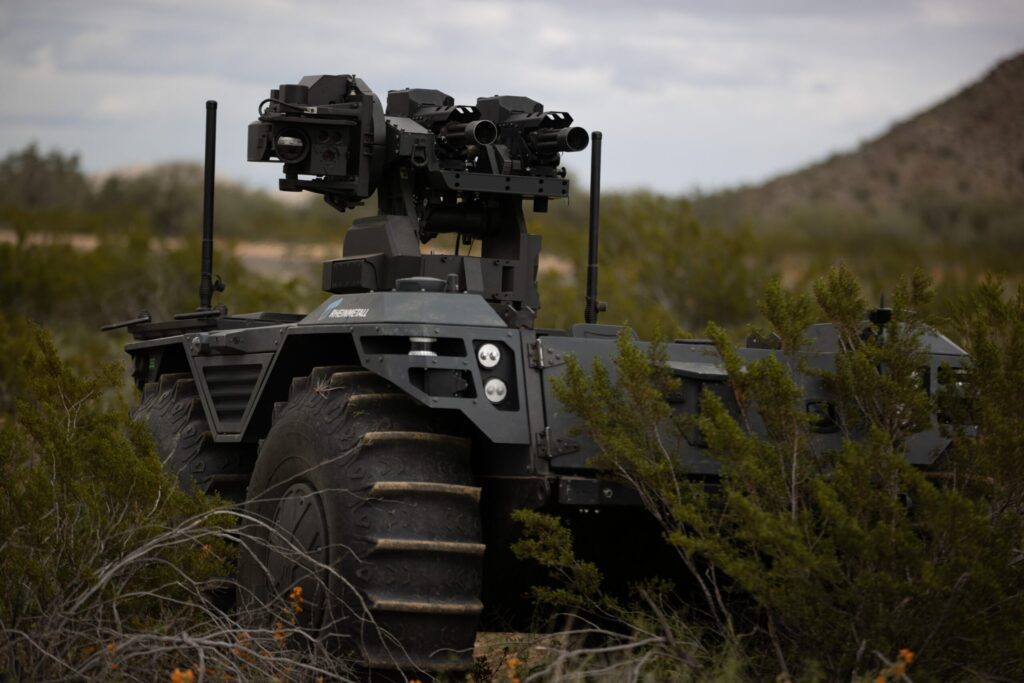Unmanned Ground Vehicles (UGVs) are transforming military operations on the battlefield, providing enhanced situational awareness, reducing risks to human personnel, and acting as a force multiplier. From reconnaissance to combat operations, UGVs are versatile platforms equipped with advanced technology like AI, sensors, and communication systems. There are various types of UGVs, including scout UGVs for surveillance, combat UGVs for engaging enemy targets, and logistics UGVs for transporting supplies. While UGVs offer numerous advantages, they also face challenges like limited range and mobility. However, ongoing research and development efforts aim to enhance UGV capabilities, shaping the future of military reconnaissance and combat.
Unmanned Ground Vehicles: The Future of Military Reconnaissance and Combat
Unmanned Ground Vehicles (UGVs) are revolutionizing the way military forces operate on the battlefield. These autonomous or remotely controlled vehicles are capable of performing a wide range of tasks, including reconnaissance, surveillance, target acquisition, and combat operations. UGVs are becoming increasingly important in modern warfare due to their ability to enhance situational awareness, reduce the risk to human personnel, and provide a significant force multiplier.
The Evolution of UGVs
UGVs have come a long way since their inception. Initially used for mine clearing and reconnaissance missions, UGVs have evolved to become versatile platforms that can perform a wide range of tasks. Advances in technology, such as artificial intelligence, sensors, and communication systems, have enabled UGVs to operate autonomously in complex and dynamic environments.
Types of UGVs
There are several types of UGVs, each designed for specific missions and environments. Some of the most common types of UGVs include:
- Scout UGVs: These UGVs are designed for reconnaissance and surveillance missions. They are equipped with sensors and cameras to provide real-time information to the operators.
- Combat UGVs: These UGVs are armed with weapons systems and are used for combat operations. They can engage enemy targets and provide fire support to friendly forces.
- Logistics UGVs: These UGVs are used to transport supplies, equipment, and ammunition to troops in the field. They can navigate rough terrain and deliver supplies quickly and efficiently.
Advantages of UGVs
UGVs offer several advantages over manned vehicles in military operations. Some of the key advantages of UGVs include:
- Reduced Risk to Personnel: UGVs can perform dangerous missions, such as mine clearing and reconnaissance in hostile environments, without risking the lives of human personnel.
- Enhanced Situational Awareness: UGVs can provide real-time information to operators, allowing them to make informed decisions quickly and accurately.
- Increased Persistence: UGVs can operate for extended periods of time without rest, providing continuous support to troops on the battlefield.
- Force Multiplier: UGVs can supplement manned vehicles and troops, increasing the effectiveness and lethality of military forces.
Challenges and Future Developments
Despite their numerous advantages, UGVs also face several challenges, such as limited range, mobility, and communication capabilities. However, ongoing research and development efforts are focused on addressing these challenges and improving the performance and capabilities of UGVs.
Future developments in UGV technology are likely to include enhanced autonomy, artificial intelligence, and sensor capabilities, as well as improvements in mobility and communication systems. These developments will enable UGVs to operate more effectively in a variety of environments and missions, ultimately shaping the future of military reconnaissance and combat.
